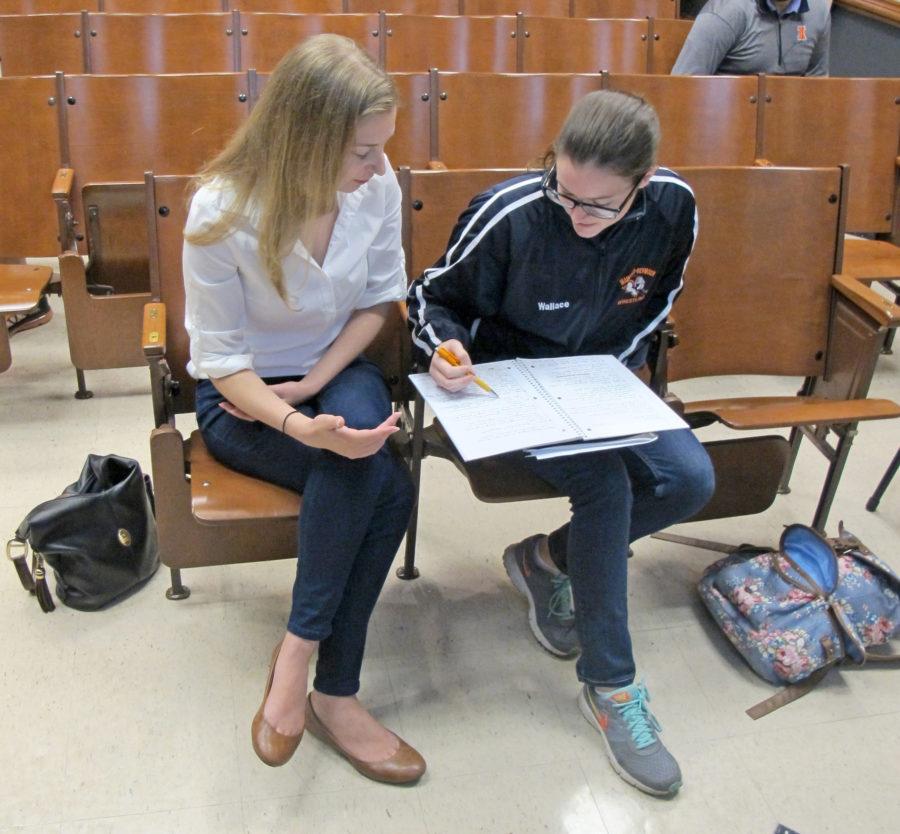Research suggests race similarities may lead to better performance
September 29, 2015
Undergraduates with teaching assistants of the same race or ethnicity are more likely to achieve higher grades, experts say.
These findings were first published in September by graduate student Lester Lusher, his advisor Scott Carrell of the University of California at Davis, and Professor Doug Campbell from the New Economic School in Russia.
This is considered the first study on the racial interactions between students and their teaching assistants.
The researchers used data on students’ grades and teaching assistant demographics from the economics department of an undisclosed Californian university.
“Even in the second week of school, students are more likely to attend their teaching assistants’ session if they are of a similar race,” Lusher said.
Get The Daily Illini in your inbox!
The team has determined two mechanisms that are the primary causes of their findings: match quality and the role-model effect.
Match quality, Lusher said, is when “some characteristics of teaching assistants of certain races benefit students of a similar race. That could be language; it could be learning style and all kinds of things. By chance, the teaching assistant has a characteristic that benefits the student.”
The role-model effect is when “the students look up to their teaching assistants and feel more comfortable approaching them and asking them questions, merely because their race is the same or similar to themselves,” he said.
The team also found that the correlation between teaching assistants’ correspondence with students and a student receiving higher grades is most apparent in essay-based exams as opposed to multiple choice. Researchers additionally found if teaching assistants know the content prior to the exam, they may teach to the test.
Regardless of race or ethnicity, Rory Johnson, teaching assistant for educational psychology, said teaching assistants are a “resource.”
Inside Higher Education reports, the role of teaching assistants is becoming increasingly significant with assistants amounting to 15 percent of the teaching workforce in higher education.
Lusher said as class sizes increase, there is an increasing anonymity between professors and students and questions can easily be left unanswered. The opportunity to attend discussion sessions, ask questions and review material in a peer-based environment allows students to consolidate course knowledge to obtain a higher grade.
David Naber, senior in Engineering, said he has had teaching assistants “for almost every single class, and they’ve been amazingly helpful. They know the material well and know how best to advise you to do well in the course.”
The tutelage provided by teaching assistants is linked with students achieving higher results. Whether this is due to similarities in race and ethnicity between teaching-assistants and students is still unclear as only one department at one university has been studied. Before this can influence policy, Lusher said, further research needs to be conducted at other universities and in different departments.







